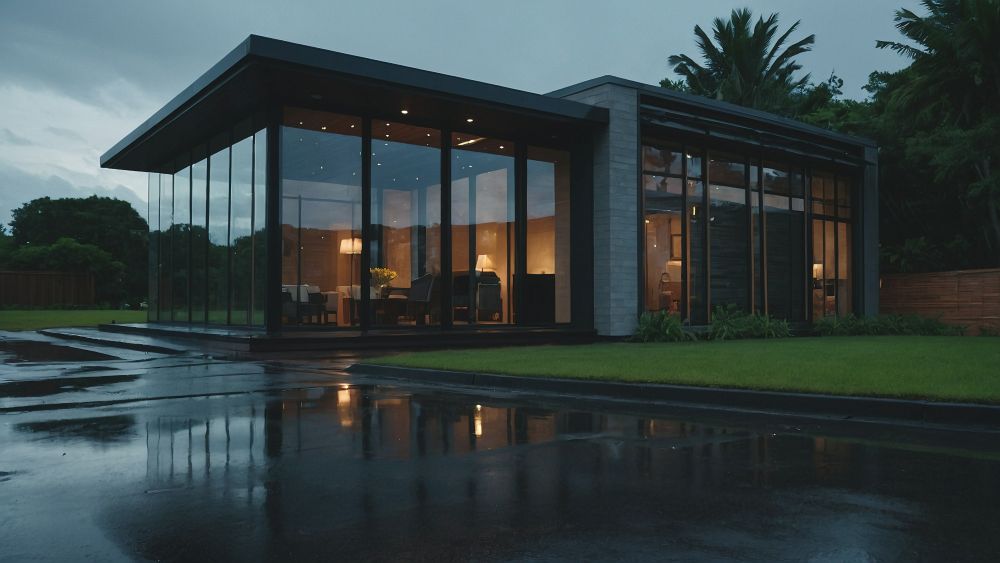The “Down and Out” Rule keeps you from being Down and Out from water damage!

For as much as we at HypoAir “hype” about air sealing your home, water control actually tops the list in importance of layers in homes. Building Science expert Joe Lstiburek expains the importance of the house “layers” in order in this video:
-
Water Control Layer
-
Air Control Layer
-
Vapor Control Layer
-
Thermal Control Layer
(We discuss more about the air and vapor layers in this article.) This “water control layer” has to be installed in the right way, which goes for any type of water control layer in a home, inside or out. There is a helpful, easy to remember rule when preventing water from going to the wrong place. The “down” part is based on gravity, because, of course, water has to follow the laws of gravity. The “out” part means that you always want to channel water “out” and away from the home, or to a drain that does the same. This is the simplified principle of how to install roofs, siding assemblies, and even showers and bathtubs correctly. We learned about this rule from the expert author of Energy Vanguard, Allison Bailes. He has a great article on it that shows an example of a design flaw and 2 incorrect installations in one small area of house siding. In the 2 photos below, the window is technically “flashed” (sealed from water ingress) correctly, because the house wrap goes over the top of the window. However, 1) the window is directly below the edge of the porch roof where water will pour onto it, 2) the house wrap is installed incorrectly–under the flashing that keeps rain off the corner where the roof meets the wall, and 3) there is a gap of house wrap below the flashing.
Photos from Down and Out Is the Rule for Draining the Rain
This could be a very wet wall in a short amount of time, because the main job of the housewrap is to channel water down and away from the sheathing in case it gets behind the siding.
Shortly after buying a nice rural home in 2017, a powerful thunderstorm blew through the area. To my surprise and dismay, water started coming in under the windward-facing wall (the sunroom). I knew from the history of the home that the sunroom used to be an outdoor patio which was later enclosed. However, I did not know that whoever enclosed it, did not follow the “down and out” rule! The rain flowed down the wall and windows, but because of the lack of barrier at the slab it just did not go “out” and instead was driven under the wall by wind. Here’s a little diagram of how the wall was originally constructed:
Can you see that most of the rain did run down the wall, but there was nothing to keep it from going under the wall if there were high winds? That’s because the studs were placed too far inside the edge of the slab (a consequence of where the previous posts for the porch were placed) and there was no flashing at the bottom. Now, I was not going to dismantle the whole wall to move it closer to the edge of the slab, but by taking off the siding from the whole ground floor, (still quite a job), I was able to install a wide aluminum flashing in a z-shape behind the tar paper (which was the equivalent to house wrap in the 1980’s) and over the edge of the slab that still does its job nicely, 8 years later. Here’s the renovated wall view:
This was eight years ago, and I’ve learned a lot since then. At the time, because the siding was board-and-batten (vertical orientation of boards) I had to take all the boards off, so I took the opportunity to install house wrap and reseal the windows. I hope that the sealing was correct, but now that the windows are failing also, I will get the opportunity to do it all again when I replace the windows (oh joy!). But at least I’ll also be able to read up on assembly techniques used against wind-driven rain, because wind exerts more force to push water where it wouldn’t normally go (hurricane and storm zone homeowners, take note!)
This principle also extends to your yard: landscaping is VERY relevant to the amount of water problems you will have in your home. Water on the ground needs to move down and away. (Building Science Begins in the Yard) The moral of the story is that anytime you undertake a project in or around your home that might encounter water, try to imagine how the water will run and pool and how you need to channel it to a safe place, but most importantly, consult building guides to make sure that you’re doing it the right way the first time, so that don’t have water damage or have to re-do anything! For this reason, we love the advice from the following websites (and more, just ask us!):
-
Building Science Corporation (how to renovate and build right, and building science)
-
Energy Vanguard (how to renovate and build right, and building science)
-
Greenbuildingadvisor.com (how to renovate and build right, and building science)
-
Howtolookatahouse.com (lots of photos of how installations go wrong!)
-
“The Build Show” with Matt Risinger (how to renovate and build right)
-
“Skill Builder” with Roger Bisby (how to renovate and build right)
-
Indoor Environmental Systems (North Carolina consultant and advisor)
-
Crawl Space Ninja (on making your crawlspace/basement/home healthy and comfortable)
-
Natethehousewhisperer.com (on making your home more healthy and comfortable)
Photo by islam allam on Unsplash






